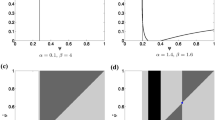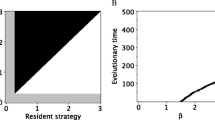Abstract.
We study the dynamics of sexually transmitted pathogens in a heterosexually active population, where females are divided into two different groups based on their susceptibility to two distinct pathogenic strains. It is assumed that a host cannot be invaded simultaneously by both disease agents and that when symptoms appear – a function of the pathogen, strain, virulence, and an individual’s degree of susceptibility – then individuals are treated and/or recover. Heterogeneity in susceptibility to the acquisition of infection and/or in variability in the length of the infection period of the female subpopulations is incorporated. Pathogens’ coexistence is highly unlikely on homogeneously mixing female and male populations with no heterogeneity among individuals of either gender. Variability in susceptibility in the female subpopulation makes coexistence possible albeit under a complex set of circumstances that must include differences in contact/mixing rates between the groups of females and the male population as well as differences in the lengths of their average periods of infectiousness for the three groups.
Similar content being viewed by others
Author information
Authors and Affiliations
Additional information
Received 25 July 1995; received in revised form 6 May 1996
Rights and permissions
About this article
Cite this article
Castillo-Chavez, C., Huang, W. & Li, J. The effects of females’ susceptibility on the coexistence of multiple pathogen strains of sexually transmitted diseases. J Math Biol 35, 503–522 (1997). https://doi.org/10.1007/s002850050063
Issue Date:
DOI: https://doi.org/10.1007/s002850050063




